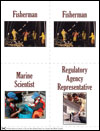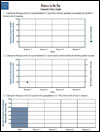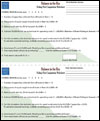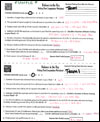How do population dynamics, environmental variability, and fishing regulations relate?
Grades: 6 - College
Overview
In this activity, students will take part in a simulated fishery, harvesting California Market Squid - Doryteuthis opalescens (formerly Loligo opalescens) - that are common in Monterey Bay and the Pacific Ocean. Because of their quick response time to environmental conditions, Market Squid can provide an interesting example of ecosystem-based management at work.
Student groups will take on various roles in a simulated fishing community, making decisions while also facing a range of natural and man-made challenges. These decisions will impact their own well being in addition to the well being of the natural squid population as a shared or "common" resource.
Maintaining a balance that sustains both the squid population and the squid fishery, which relies on that population, will prove to be challenging. Students will analyze their decisions and recognize the difficulty associated with maintaining a healthy "balance in the bay."
Skills/Outcomes:
- Students will gain an understanding of some of the inter-related factors involved in the ecosystem-based management of a marine resource.
- Students will learn to effectively apply critical thinking and problem-solving skills to respond to natural and man-made challenges.
- Students will learn how to apply ecosystem-based management principles to find solutions.
- Students will learn to use basic arithmetic to calculate and record numerical values, prepare and interpret graphs and charts, and make decisions based on their understanding of these numbers.
Time: 150 minutes
Education Standards
National |
Science: NS.9-12.1 Science as Inquiry. NS.9-12.6 Personal and Social Perspectives: population growth, natural resources, environmental quality. Math: NM-NUM.9-12.3 Number and Operations: compute fluently and make reasonable estimates. NM-PROB.CONN.PK-12.3 Connections: recognize and apply mathematics in contexts outside of mathematics. Economics: NSS-EC.9-12.1 Scarcity. NSS-EC.9-12.11 Role of Money. NSS-EC.9-12.13 Role of Resources in Determining Income. Social Sciences: NSS-G.K-12.2 Places and Regions. NSS-G.K-12.3 Physical Systems. |
|---|---|
California |
Science: Grade 9-12, Ecology (6): Sustainability in an ecosystem is a balance between competing effects. Grade 9-12, Investigation & Experimentation (1): Scientific progress is made by asking meaningful questions and conducting careful investigations. Math: Algebra I (3.0): Students solve equations and inequalities involving absolute values. Algebra I (5.0): Students solve multi-step problems, including word problems, involving linear equations and linear inequalities in one variable and provide justification for each step. |
Ocean Literacy |
1. The Earth has one big ocean with many features (h). 5. The ocean supports a great diversity of life and ecosystems (f). 6. The ocean and humans are inextricably interconnected (b, c, e, g). |
Activity Guide & Powerpoint
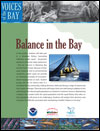
Activity Guide (pdf 6.2 MB)
Printable Materials
Middle School

Computation Worksheet (pdf 6.2 MB)
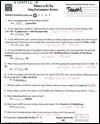
Completed Worksheets(ppt 684 KB)
High School, Community College, and Undergraduate
Online Resources
- Hardin, Garrett. 1968. The Tragedy of the Commons. Science Magazine, 162: 1243-48.
- Monterey Bay National Marine Sanctuary
- Leos, Robert. 2007. Commercial landings tables. California Department of Fish and Game
- Magnuson-Stevens Fishery Conservation and Management Act. 1996. Public Law 94-265
- California Department of Fish and Game. 2005. Market Squid Fishery Provisions (pdf). September 2008
- California Department of Fish and Game. 2005. Market Squid Fishery Management Plan. September 2008
- National Oceanic and Atmospheric Administration. 2007. Ecosystem-based Management (pdf). July 2008
Evaluations
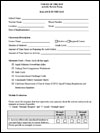
Teacher Evaluation (fillable pdf 220 KB)



